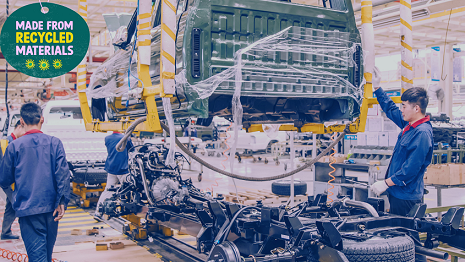
The automotive industry is working towards a greener future by using sustainable materials. As more people worry about climate change, car makers are finding ways to lessen their impact on the environment. Using these materials not only helps the planet but also improves car design and performance. This article talks about sustainable materials in cars, their benefits, and their future.
The Importance of Sustainable Raw Materials
Sustainable raw materials can be used without harming the environment or using up natural resources. They are important in the car industry for a few reasons:
Environmental Impact:
Regular car materials like steel and plastic harm the environment because they use a lot of energy to make and are not renewable. Sustainable materials can help reduce pollution and save natural resources.
Regulatory Compliance:
It is important to follow rules and guidelines to keep the public safe and maintain a good reputation.
Consumer Demand:
Many consumers today care about the environment and prefer products that reflect their values. Using sustainable materials in cars can attract these customers, leading to more sales and brand loyalty.
Types of Sustainable Raw Materials in Automobiles
The car industry is looking for different sustainable materials to replace traditional ones, such as:
Bioplastics:
Bioplastics come from renewable sources like corn and sugarcane. They break down naturally and have less impact on the environment compared to regular plastics. They are used in parts like interior panels and seat cushions.
Natural Fibers:
Natural fibers like hemp and flax are being used in car parts because they are strong, light, and biodegradable. These fibers can be used in dashboards and door panels.
Recycled Metals:
Recycling metals such as aluminum and steel not only conserve natural resources but also reduces energy consumption and greenhouse gas emissions. Recycled metals are used in vehicle bodies, engine components, and chassis, contributing to the sustainability of the entire production process.
Bio-based Foams:
The base of the base material is the same as the base material. It can be used to ensure the safety and security of the system at the same time.
Sustainable Textiles:
Fabrics made of PET and woven cotton are being used in car interiors. This material offers comfort and durability while reducing wear resistance and durability.
Benefits of Using Sustainable Raw Materials
Using sustainable raw materials in vehicle production has the following advantages:
Reduced Carbon Footprint:
Traditionally, the production of sustainable materials often requires less energy and requires lower energy consumption. This will help the automobile manufacturing industry.
Improved Fuel Efficiency:
The materials and materials are all the same. Light vehicle weight reduction
Enhanced Sustainability:
It is often the case that environmental pollution and environmental pollution occur, and it is true that environmental pollution does not lead to long-term environmental degradation.
Innovation and Design Flexibility:
New materials enable greater flexibility and production. The automotive manufacturing industry has explored the capabilities and capabilities of automobile manufacturing and developed unique vehicle solutions.
Challenges in Adopting Sustainable Raw Materials
While the benefits of sustainable raw materials are easy to understand, they are not without their challenges in the automotive industry:
Cost:
Sustainable materials can be more expensive than conventional materials, affecting the overall cost of vehicle production. However, as demand and production scale increase, prices are expected to become more competitive.
Performance:
Ensuring that sustainable materials meet the performance standards of traditional materials is critical. Materials must be tested for durability, safety, and reliability to ensure they can withstand the rigors of automotive applications.
Supply Chain Complexity:
Sustainable materials may be more complex than conventional materials, requiring the automotive industry to establish new chains and partnerships. This may not be possible.
Consumer Awareness:
It is of utmost importance to retain and educate consumers in the industry. The automobile system must be fully equipped with the necessary capital and equipment to ensure the safety of the vehicle.
The Future of Sustainable Raw Materials in Automobiles
The future of sustainable raw materials in the airship is full of hope, and continuous innovation and innovation are driving new innovations. Here are some trends worthies of attention.
Advancements in Bioplastics:
The material has the ability to change its shape and increase its strength, flexibility, and durability.
Nanotechnology:
Nanotechnology is being used to enhance the performance of sustainable materials. For example, incorporating nanoparticles into bioplastics can improve their mechanical properties, making them more suitable for structural components.
3D Printing:
We are exploring 3D printing technology to use sustainable materials to make automotive parts. This can achieve accurate and accurate production and reduce production costs and actual manufacturing costs.
Circular Economy:
The concept of circular economy, that is, the reuse and recycling of materials, is gaining more and more attention in the automotive field.


